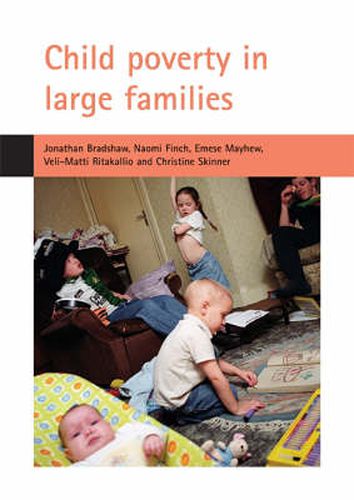Readings Newsletter
Become a Readings Member to make your shopping experience even easier.
Sign in or sign up for free!
You’re not far away from qualifying for FREE standard shipping within Australia
You’ve qualified for FREE standard shipping within Australia
The cart is loading…






The UK child poverty rate for large families is among the highest in the OECD. This study investigates the prevalence and characteristics of poor children in large families in the UK and how we compare with other countries. It also explores how the tax and benefit system has varied by family size over recent years and how this in turn compares with other countries. Given the UK government’s commitment to the abolition of child poverty by 2020, the report discusses how the tax and benefit system might be adapted in favour of large families so that this target might be achieved.
The work is based on the secondary analysis of national and international data. The national data sets included the Family Resources Survey, The Millennium Cohort Study and the Family and Child Survey. The international data was drawn from the European Community Household Panel and the Luxembourg Income Study. The study also drew on national and international data on how the tax benefit system impacts on model families.
$9.00 standard shipping within Australia
FREE standard shipping within Australia for orders over $100.00
Express & International shipping calculated at checkout
The UK child poverty rate for large families is among the highest in the OECD. This study investigates the prevalence and characteristics of poor children in large families in the UK and how we compare with other countries. It also explores how the tax and benefit system has varied by family size over recent years and how this in turn compares with other countries. Given the UK government’s commitment to the abolition of child poverty by 2020, the report discusses how the tax and benefit system might be adapted in favour of large families so that this target might be achieved.
The work is based on the secondary analysis of national and international data. The national data sets included the Family Resources Survey, The Millennium Cohort Study and the Family and Child Survey. The international data was drawn from the European Community Household Panel and the Luxembourg Income Study. The study also drew on national and international data on how the tax benefit system impacts on model families.